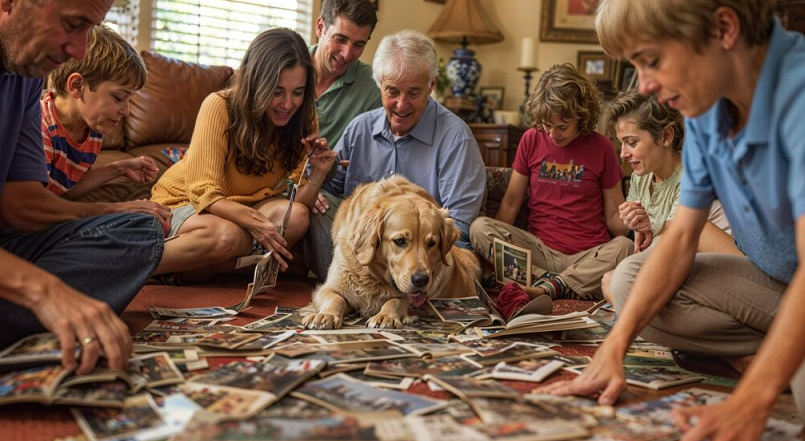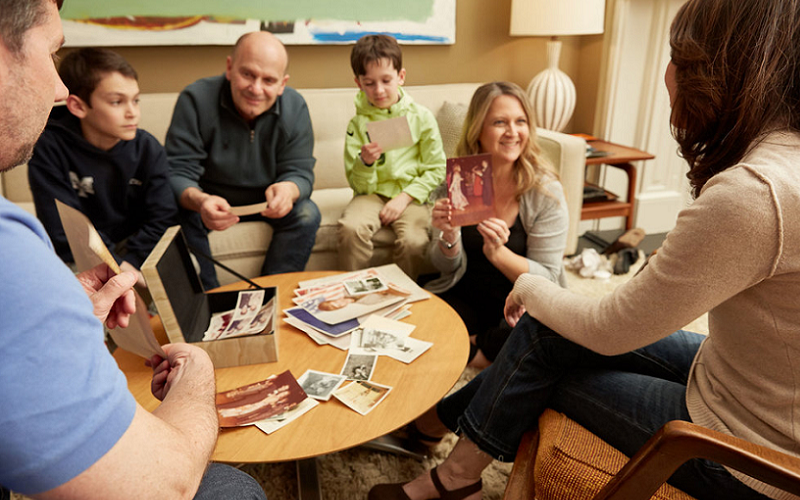Storytelling has always been a vital part of human culture, serving as a bridge between generations and a vessel for preserving history. In the realm of genealogy, storytelling plays an essential role in keeping family histories alive and vibrant. Through stories, we can bring our ancestors to life, sharing their experiences, values, and lessons with future generations.
The Historical Significance of Oral Traditions
Oral traditions have played a crucial role in the preservation of history and culture throughout human civilization. These traditions have allowed communities to pass down stories, values, and knowledge across generations, ensuring that the essence of their heritage remains intact. By understanding the historical significance of oral traditions, we can appreciate their impact on family history and genealogy.
Early Forms Of Storytelling
Throughout history, storytelling has been a fundamental way for cultures to communicate and preserve their histories. Early forms of storytelling were predominantly oral, with stories being passed down from one generation to the next through spoken word.
Oral Traditions In Ancient Cultures
In ancient cultures, oral traditions were the primary method of preserving history. Societies without written languages relied on storytellers to convey important events, genealogies, and cultural values. These storytellers, often revered as keepers of knowledge, played a vital role in maintaining the continuity of their communities’ heritage.
Folktales And Myths
Folktales and myths are another form of early storytelling that served to explain natural phenomena, cultural practices, and moral lessons. These stories were often rich in symbolism and metaphor, making them memorable and impactful. By passing down these tales, communities ensured that their beliefs and values were transmitted through generations.
Storytelling As A Means Of Cultural Preservation
Storytelling has not only been a way to entertain but also a powerful tool for cultural preservation. Through stories, communities have been able to keep their traditions, languages, and identities alive.
Passing Down Traditions And Values
One of the primary functions of storytelling is to pass down traditions and values. Stories about ancestors, historical events, and cultural practices help to reinforce a sense of identity and continuity within a community. By sharing these stories, families can impart important life lessons and cultural norms to younger generations, ensuring that their heritage is preserved [1].
Historical Accuracy And Embellishment
While storytelling is a valuable tool for preserving history, it is also subject to embellishment and adaptation. As stories are passed down, they may be altered to fit the context of the time or to make them more engaging. This blend of historical accuracy and creative embellishment can make it challenging to separate fact from fiction. However, it also adds a rich layer of cultural texture to the narratives, reflecting the values and perspectives of different eras.

Benefits of Storytelling in Family History
Storytelling offers numerous benefits in the context of preserving family history. By sharing stories, we create emotional connections, enhance memory retention, and bridge generational gaps. These benefits ensure that our family histories are not only remembered but cherished by future generations.
Creating Emotional Connections
One of the most powerful aspects of storytelling is its ability to create emotional connections. When we hear stories about our ancestors, we begin to see them as real people with experiences, emotions, and struggles similar to our own.
Personalizing Ancestors
Through storytelling, we can personalize our ancestors, making their lives and experiences more relatable. By sharing anecdotes and personal stories, we can paint a vivid picture of who they were, what they valued, and how they lived. This personalization helps to foster a deeper connection to our family history.
Building Family Identity
Storytelling also plays a crucial role in building a strong family identity. When family members share stories, they contribute to a collective understanding of what it means to belong to that family. This shared identity can strengthen family bonds and create a sense of belonging among all members [2].
Enhancing Memory And Retention
Storytelling is an effective way to enhance memory and retention of family history. The engaging nature of stories makes it easier for listeners to remember details and pass them on to future generations.
Engaging The Listener
A well-told story captures the listener’s attention and makes the content more memorable. By incorporating elements such as vivid descriptions, emotional highs and lows, and relatable characters, storytellers can ensure that their audience remains engaged and retains the information being shared.
Making History Relatable
Stories make history more relatable by connecting events and experiences to personal emotions and human experiences. This relatability helps listeners to understand and remember historical events within the context of their own lives, making family history more accessible and meaningful.
Bridging Generational Gaps
Storytelling is a powerful tool for bridging generational gaps within families. It allows different generations to share experiences, values, and lessons, fostering mutual understanding and respect.
Sharing Experiences Across Ages
When older family members share their stories, they provide younger generations with a glimpse into the past. This sharing of experiences helps to bridge the gap between ages, creating a sense of continuity and connection. Younger family members can gain insights into the lives of their ancestors, understanding the challenges and triumphs they faced.
Fostering Family Unity
By sharing stories, families can foster a sense of unity and togetherness. Storytelling encourages family members to come together, listen, and participate in the preservation of their shared history. This collective effort helps to strengthen family bonds and ensures that everyone feels a part of the family’s ongoing narrative.
Methods of Storytelling in Genealogy
There are various methods to share and preserve family stories in genealogy. From oral narratives to written accounts and digital storytelling, each method offers unique ways to capture and convey family histories. By exploring these methods, we can find the best approach to keep our family stories alive for future generations.
Oral Narratives
Oral narratives have been a traditional method of preserving history for centuries. This method involves telling stories through spoken word, often in an interactive and engaging manner.
Family Gatherings And Reunions
Family gatherings and reunions provide a perfect opportunity to share oral narratives. These events bring together multiple generations, allowing elders to recount stories and memories. This sharing not only preserves family history but also strengthens family bonds [3].
Recorded Interviews And Audio Diaries
Recording interviews and creating audio diaries are modern ways to preserve oral narratives. By capturing the voices of family members as they tell their stories, we can create lasting records that can be shared with future generations. These recordings can be stored digitally and accessed easily, ensuring that the stories are preserved in their original form.
Written Stories
Writing down family stories is another effective method of preservation. Written accounts provide a tangible record that can be passed down through generations, ensuring that family history is documented and remembered.
Memoirs And Biographies
Writing memoirs and biographies of family members is a detailed way to preserve their stories. These written accounts can provide in-depth insights into the lives, experiences, and personalities of ancestors. By compiling these stories, families can create a comprehensive record of their history.
Family Newsletters And Journals
Family newsletters and journals offer a more periodic way to document and share stories. These publications can include updates on family events, personal anecdotes, and historical stories. Regularly producing newsletters or maintaining journals ensures that family history is continuously recorded and shared.
Visual And Digital Storytelling
In the digital age, visual and digital storytelling methods have become increasingly popular. These methods incorporate multimedia elements, making stories more engaging and accessible.
Photo Albums And Scrapbooks
Creating photo albums and scrapbooks is a visual way to preserve family history. By compiling photographs, mementos, and written captions, families can create visual narratives that highlight significant moments and memories. These albums and scrapbooks serve as cherished keepsakes that can be passed down through generations.
Digital Storytelling Platforms
Digital storytelling platforms offer a modern way to share family stories. These platforms allow users to combine text, audio, video, and images to create interactive and dynamic narratives. By using digital tools, families can preserve their stories in a format that is easily shareable and accessible to a wider audience.
Collecting and Preserving Family Stories
Collecting and preserving family stories is a crucial aspect of maintaining a rich and vibrant family history. This process involves interviewing family members, researching and verifying facts, and organizing and archiving the collected stories. By following these steps, we can ensure that our family histories are accurately and effectively preserved for future generations.
Interviewing Family Members
Interviewing family members is a foundational step in collecting family stories. By engaging with relatives, we can uncover personal anecdotes, memories, and experiences that form the core of our family history.
Preparing Questions
Preparation is key to conducting successful interviews. Before the interview, create a list of questions that cover various aspects of the interviewee’s life, including childhood memories, significant life events, and family traditions. Open-ended questions often elicit more detailed and meaningful responses [4].
Recording And Transcribing Stories
Recording interviews ensures that the stories are captured accurately and can be revisited later. Use audio or video recording devices to document the conversations. Transcribing these recordings into written form makes it easier to organize and reference the stories.
Researching And Verifying Facts
To ensure the accuracy of family stories, it is important to research and verify the facts. This step involves cross-referencing the collected stories with historical records and other sources.
Cross-Referencing With Historical Records
Compare the information gathered from family stories with historical records such as birth certificates, marriage licenses, census data, and other official documents. This cross-referencing helps to confirm the details and provides a factual basis for the stories.
Fact-Checking Anecdotes
Fact-checking anecdotes is essential to maintain the integrity of the stories. While personal recollections may be subject to memory lapses or embellishments, verifying the key details ensures that the core of the story remains truthful and accurate.
Organizing And Archiving Stories
Once the stories are collected and verified, organizing and archiving them is crucial for easy access and preservation. This step involves categorizing the stories and creating a system for storage and retrieval.
Categorizing By Themes Or Generations
Organize the stories by themes, such as significant events, family traditions, or individual life stories, or by generations. This categorization helps to create a structured and coherent family history that is easy to navigate.
Creating Accessible Archives
Creating accessible archives ensures that the collected stories can be easily accessed by family members. Digital archives, such as online family trees or cloud-based storage, provide a convenient way to store and share the stories. Physical archives, such as printed books or scrapbooks, can also be created for those who prefer tangible records.
References
[1] Generations of Wisdom: Preserving and Passing Down Family Stories
[2] Preserve the Stories That Matter
[3] Hear Us, See Us: The Importance of Storytelling
[4] How Recording Family Stories Can Preserve Culture and Heritage


